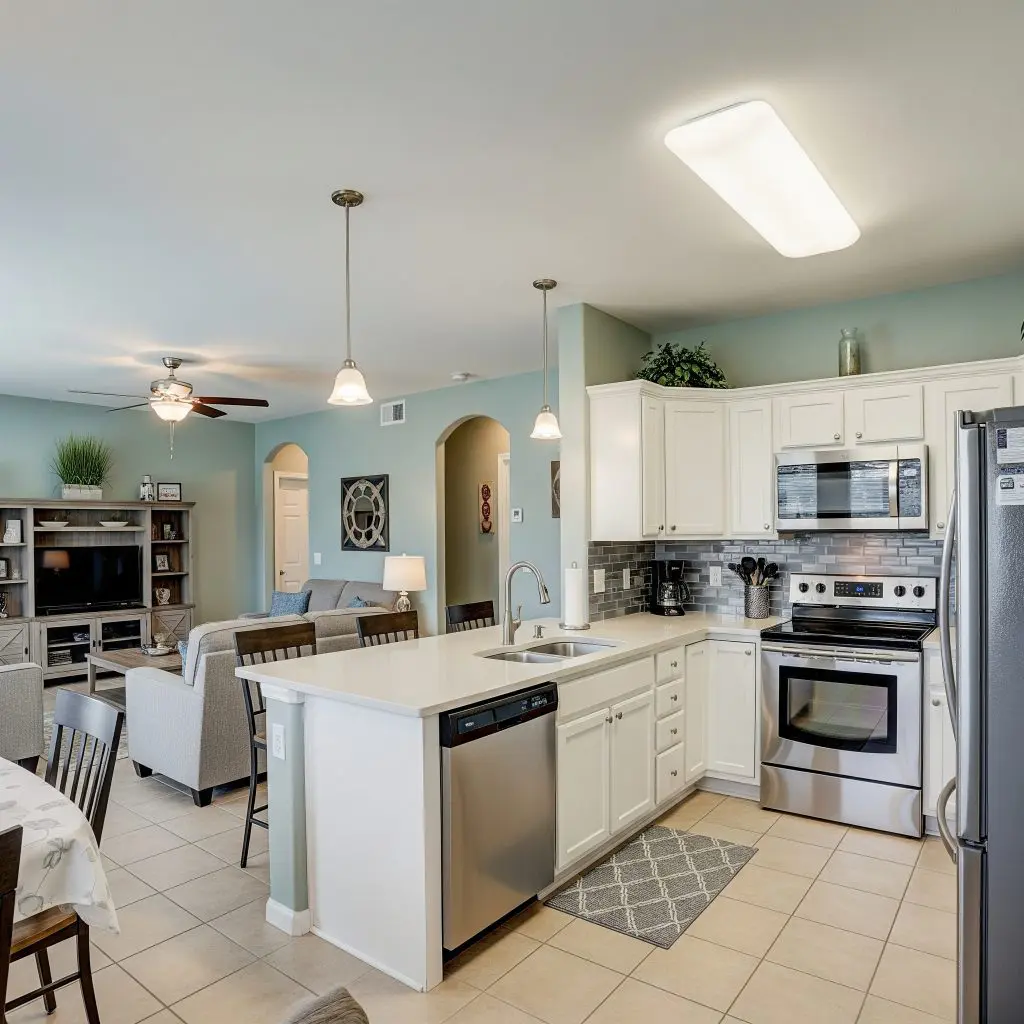Minnesota Inflation Budgeting & Real Estate Investment Guide 2025
The economic landscape of 2025 is shifting rapidly, and Minnesota stands at a unique crossroads between strong regional growth and the persistent challenge of inflation. Whether you’re a first-time homebuyer, seasoned investor, or simply working to future-proof your family budget, understanding inflation’s effects on Minnesota—and uncovering the state’s best real estate investment opportunities—will be key to your financial success.
- Minnesota Inflation Budgeting & Real Estate Investment Guide 2025
- Understanding Inflation in Minnesota: 2025 State Economic Backdrop
- Inflation Budgeting: Minnesota-Specific Strategies
- Identifying the Best Real Estate Investments in Minnesota Under High Inflation
- Best Real Estate Investment Opportunities by City
- Minnesota-Wide Investment Opportunities
- Population Growth & Economic Drivers
- State Tax and Regulatory Environment
- Inflation-Proofing: Local Real Estate as a Hedge
- Local Success Story: North Loop Redevelopment
- Case Study: Rochester’s Build-to-Rent Boom
- Investment Tips for 2025: Practical Steps
- 2025 Minnesota Economic Forecast and Projections
- Conclusion: Your Inflation-Resistant Path in Minnesota
Understanding Inflation in Minnesota: 2025 State Economic Backdrop
Inflation remained high through 2024 and into early 2025, impacting pricing across goods, services, and most notably the real estate sector in Minnesota. Key indicators to note:

- Consumer Price Index (CPI) for Minneapolis-St. Paul (MSP): Up 5.1% year-over-year versus national pace of 4.5%
- Housing Costs: Median home price statewide rose to $356,000 in Q1 2025, up 6.2% from 2024
- Rent Inflation: Twin Cities rental market saw average rents climb 7.4%, led by robust demand in urban cores
- Utility Costs: 2025 utility bills for the average household in Minnesota are 8% higher than in 2023, largely due to increased energy prices
- Statewide Wage Growth: Lagging slightly behind inflation at a 3.7% annual increase
The confluence of supply chain constraints, strong employment, and rising input costs has forced Minnesotans to rethink household budgeting and seek inflation-resistant investment opportunities.
Need capital? GHC Funding offers flexible funding solutions to support your business growth or real estate projects. Discover fast, reliable financing options today!
Test Your Expertise: The Complexities of the 1031 Exchange

As a sophisticated real estate investor, you understand that the 1031 Exchange is a cornerstone strategy for tax deferral and wealth accumulation. But beyond the basics, the intricacies of the 1031 Exchange rules can pose significant challenges. This quiz is designed to test your in-depth knowledge and highlight critical nuances that separate casual investors from true experts in 1031 Exchange transactions.
Instructions: Choose the best answer for each question.
⚡ Key Flexible Funding Options
GHC Funding everages financing types that prioritize asset value and cash flow over lengthy financial history checks:
-
Bridge Loans: These are short-term loans used to "bridge the gap" between an immediate need for capital and securing permanent financing (like a traditional loan or sale). They are known for fast closing and are often asset-collateralized, making them ideal for time-sensitive real estate acquisitions or value-add projects.
-
DSCR Loans (Debt Service Coverage Ratio): Primarily for real estate investors, these loans are underwritten based on the property's rental income vs. debt obligation ($\text{DSCR} = \text{Net Operating Income} / \text{Total Debt Service}$), not the borrower's personal income or tax returns. This offers flexibility for those with complex finances.
-
SBA Loans: The Small Business Administration (SBA) guarantees loans offered by partner lenders. While providing excellent terms (long repayment, lower rates), the application process is typically slower than private/bridge funding, often making them less suitable for immediate needs. SBA eligibility heavily relies on the DSCR metric for repayment assessment.
🌐 Learn More
For details on GHC Funding's specific products and to start an application, please visit their homepage:
The Ultimate DSCR Loan for Rental Property Quiz

Are you looking to expand your real estate investment portfolio? A DSCR loan might be the perfect tool to help you achieve your goals without relying on traditional income documentation. Test your knowledge with this quiz to see if you're ready to master the intricacies of a DSCR loan for rental property.
Inflation Budgeting: Minnesota-Specific Strategies
Key Cost of Living Adjustments in Minnesota for 2025
- Groceries: Upward pressure due to transportation and agri-input costs; prioritize local farmer markets and value-chain grocers.
- Housing: Both mortgage interest rates and rents are elevated; consider shared housing or multi-family rental strategies in high-demand submarkets.
- Utilities: Invest in energy efficiency—insulation, smart thermostats—to reduce storm season and winter heating spikes.
- Transportation: Higher gas prices incentivize public transit, biking, or proximity-based housing solutions in urban areas like Minneapolis and St. Paul.
- Healthcare: Use HSAs where possible and check insurer-provided inflation adjustment options.
Tip for Budgeters: Increase your annual budget projections by 6–7% to account for lingering inflation. Revisit discretionary spending and automate savings to inflation-resistant ETFs or locals bonds.
Identifying the Best Real Estate Investments in Minnesota Under High Inflation
Overview & Local Market Fundamentals
Minnesota’s real estate market in 2025 is defined by:
- Limited inventory, especially in urban cores (Minneapolis, St. Paul, Rochester)
- Population growth concentrated in major metros and emerging suburbs
- Stable job market led by healthcare, technology, and logistics sectors
- Robust rental demand as higher mortgage rates price out new buyers
✅ Small Business Resources
-
SBA – Small Business Administration
https://www.sba.gov - SCORE Mentors (Free Mentoring & Workshops)
https://www.score.org - Small Business Development Centers (SBDC)
https://americassbdc.org
Are You an SBA Real Estate Loan Expert?

Test your in-depth knowledge on using SBA Loans for owner-occupied commercial Real Estate acquisition. These questions delve into the critical details that can impact your business's growth and financial strategy.
This year’s strongest opportunity is in urban rental properties, but we’ll examine other asset types throughout.
Best Real Estate Investment Opportunities by City
1. Minneapolis: Urban Rental Goldmine
- Neighborhoods: North Loop, Uptown, Dinkytown (university), Whittier
- Current Trends: Renter-occupancy rates at 69% in core neighborhoods, with average rents exceeding $1,550/month for one-bedrooms
- Investment Play: Acquire and upgrade mid-sized multi-family (5–20 unit) buildings or new-build micro-apartments focused on young professionals and students
- State Tax Advantage: Minnesota State Property Tax Refund available to both homeowners and qualifying rental property owners
2. St. Paul: Value-Driven Urban Multifamily
- Neighborhoods: Cathedral Hill, Lowertown, West Seventh
- Vacancy Rates: Second-lowest in metro at 4.1%
- Case Study: A 12-unit Lowertown mixed-use property purchased in 2021 for $1.8M, renovated with green upgrades, now yields a 9.3% cap rate as of 2025, outperforming market averages
3. Rochester: Healthcare-fueled Rental Demand
- Drivers: Mayo Clinic expansion and ongoing biotech corridor developments
- Rental Yields: Market-rate apartments in the city center averaging $1,400/month; short-term medical rental demand is surging
- Investment Tip: Focus on Class B multifamily within reach of medical parks or coworking/collaboration hubs
4. Duluth & Moorhead: Regional Stability Anchored by Education
- Universities: UMD and MSUM drive year-round occupancy
- Typical Returns: Student housing or co-living units offer 7–10% annualized returns, especially with semi-furnished upgrades
Minnesota-Wide Investment Opportunities
- Mixed-use Properties: Urban cores blend retail + residential; incentives available through city revitalization grants
- Affordable Housing/Twin Home Developments: State and city tax credits for investors developing affordable units in MSP and Rochester
- Build-to-Rent: Suburban developments near Bloomington, Maple Grove, Eagan see investor interest as families rent longer in high-rate environments
- Transit-oriented Properties: Invest in assets close to new light-rail and rapid bus corridors, where values are expected to rise 10–15% over five years
Population Growth & Economic Drivers
- 2025 Population Estimate: Exceeding 5.78 million, up 0.8% year-over-year
- Growth Centers: Twin Cities Metro, Rochester, St. Cloud suburban ring
- Economic Drivers: Healthcare, education, tech start-ups, food processing, renewable energy
- Infrastructure: Ongoing Southwest LRT expansion (Minneapolis–Eden Prairie) will boost corridor property values
State Tax and Regulatory Environment
- Statewide Property Tax: Rates average 1.08%, but cities like St. Paul and Duluth have higher rates; strong local services offset high property taxes
- Homestead Credits: Minnesota Homestead Market Value Exclusion eases low/medium home tax loads
- Investment Incentives: City of Minneapolis and St. Paul offer forgivable loan programs for small landlords and energy-efficiency retrofits; Opportunity Zone tax deferrals in targeted neighborhoods
Inflation-Proofing: Local Real Estate as a Hedge
✅ Real Estate Investor Resources
-
AirDNA (Short-Term Rental Data)
https://www.airdna.co - Rentometer (Rent Comps)
https://www.rentometer.com - Zillow Research & Data
https://www.zillow.com/research
DSCR Loan IQ Quiz!

Test your knowledge of Debt Service Coverage Ratio (DSCR) loans!
Real estate in Minnesota offers unique protection against inflation due to:
- Lease Structures: Regular rent escalations indexed to local inflation or cost-of-living formulas
- Fixed-Rate Financing: Locking in long-term mortgage rates; rent increases outpace mortgage cost increases in 2025
- Tax Benefits: Depreciation offsets, growing Section 179D energy incentives
Local Success Story: North Loop Redevelopment
In Minneapolis’s North Loop, a group of investors acquired a vacant warehouse in 2020 for $2.6M, converting it into 18 modern, energy-efficient 1-bedroom rentals. With 100% occupancy and above-market rents in 2025, the building delivers an unlevered 7.6% yield, outpacing both stock market returns and inflation. City historic renovation tax credits and a forgivable loan on energy upgrades added layers of long-term value.
Case Study: Rochester’s Build-to-Rent Boom
An out-of-state investor group launched 40 high-quality townhomes near the Mayo Clinic in 2022. By 2025, the townhomes command $2,250–$2,900/mo rents—double comparable units elsewhere in southeast Minnesota, with vacancy rates below 2.5%. State-level incentives plus a regional housing trust grant further enhanced the IRR above 10% per year.
Investment Tips for 2025: Practical Steps
- Focus on Metro Renters: Target neighborhoods within transit corridors or university catchments for strong rental demand.
- Lock Long-term Financing: Use fixed-rate debt to control costs as rents rise.
- Claim State & Local Incentives: Retrofit for energy efficiency and leverage Opportunity Zones.
- Diversify by Asset Type: Consider small multifamily, mixed-use, and build-to-rent to insulate against sector swings.
- Check Local Tax Rates: Municipal property taxes vary; factor these into cash flow models and seek exclusions where possible.
2025 Minnesota Economic Forecast and Projections
- GDP Growth: 1.8% projected in 2025
- Unemployment Rate: Stable at 3.2% (below national average)
- Housing Starts: Increasing in Twin Cities, but material/labor costs remain high
- Top Investment Sectors: Multi-family urban, affordable/subsidized housing, mixed-use redevelopment
Conclusion: Your Inflation-Resistant Path in Minnesota
Surviving—and thriving—during high inflation in Minnesota demands both smart budgeting and targeted real estate investing. The strongest hedge lies in urban rental property, especially near job centers and universities, buttressed by local incentives and tax advantages. As Minnesota’s economy grows and urbanization continues, real estate will outpace inflation and offer long-term wealth building—if you act on the right opportunities and structure your portfolio defensively in 2025.
Ready to chart your resilient future? Consider partnering with a Minnesota-based real estate specialist or financial advisor to create a tailored inflation-proof plan today.
Get a No Obligation Quote Today.



